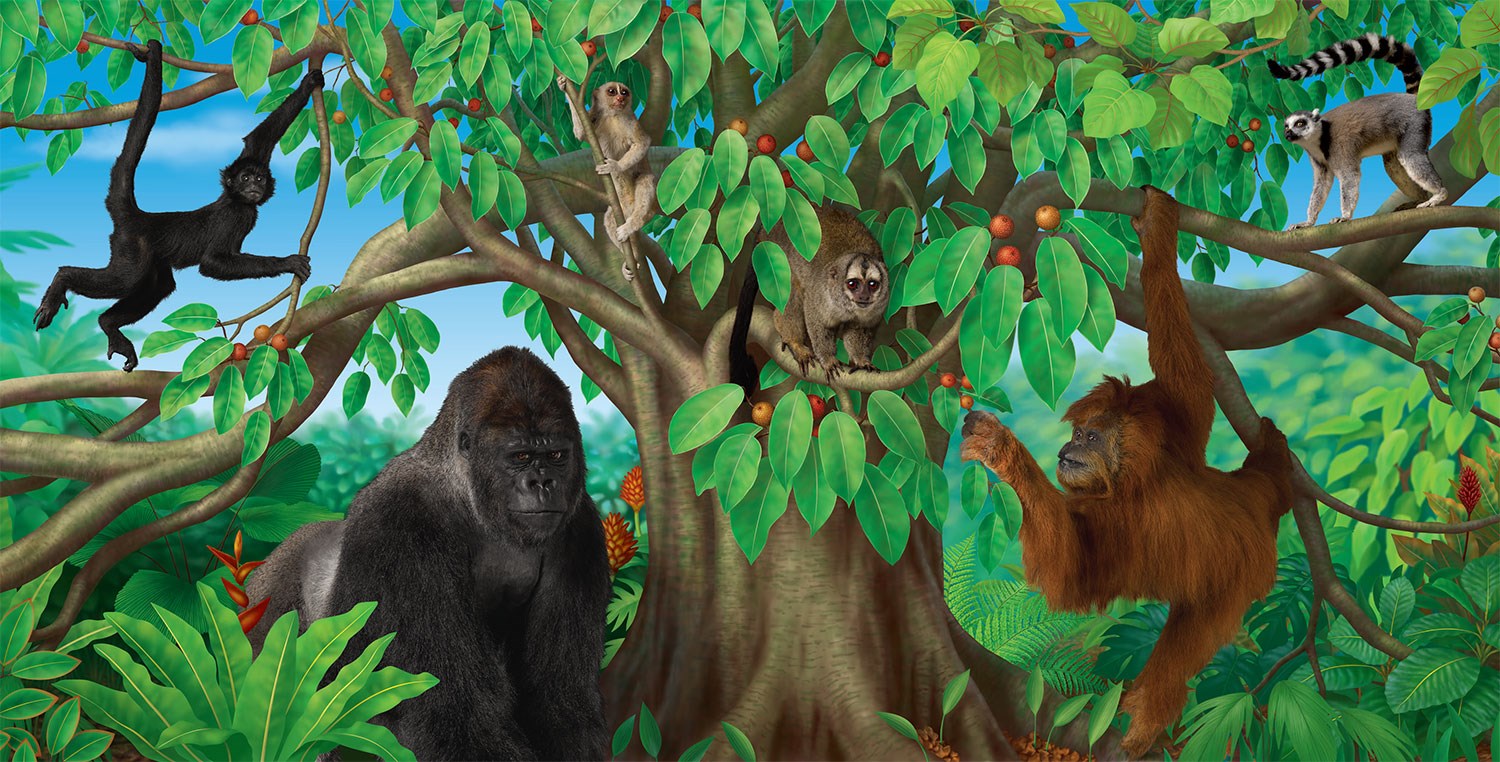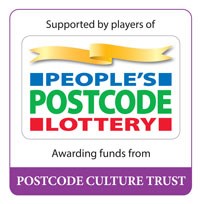Monkey Business
Friday 9 December 2016 to Sunday 23 April 2017
National Museum of Scotland, Chambers Street, Edinburgh
The jungle is coming to the National Museum of Scotland this winter as primates swing from the branches, hang by their tails and screech from the canopy in Monkey Business from 9 December 2016.
More than 50 spectacular new taxidermy specimens of monkeys, apes, lemurs, lorises and bush-babies will be revealed in the most comprehensive exhibition on primates ever. The taxidermy was specially commissioned for the exhibition, which is the first to show primates behaving as if they were in the wild. Dynamic poses capture the wide variety of behaviours of some of the world’s most endangered primates.
Dr Andrew Kitchener, Principal Curator, Vertebrate Biology, said:
“We are all primates but how much do we really know about this fascinating animal group? Monkey Business is a once-in-a-lifetime exhibition and the first of its kind worldwide. Visitors will enjoy an unrivalled opportunity to learn about the diversity of the primate family and to see them up close. They will also be able to learn about the impact our choices have on primate livelihood and what we can do to protect them.”
Atmospheric lighting and naturalistic displays will simulate an immersive jungle experience as visitors enter the exhibition and come face-to-face with the primates. The exhibition explores how primates have evolved and adapted, how they communicate, and the tools they have developed to obtain food. It reveals their complex social systems and looks at the relationship between primates and humans today.
A mouse lemur and a Western Iowland gorilla, amongst the world’s smallest and largest primates, will greet visitors as they arrive. Displays explore locomotion and feeding with a gibbon swinging through the trees and a chimpanzee fishing for termites. Visitors will learn about different primate diets, from eating leaves to gum and bamboo. Monkeys are shown using rocks to smash open nuts and seeds whilst an aye-aye is displayed using its long finger to retrieve a grub from behind bark.
Displays explore communication, social groups and behaviours. Visitors will learn more about the visual signals, language and scent-marking used by primates. A tarsier is shown using ultrasonic communication whilst a vervet monkey reveals how its different calls warn about each different predator. A social group of Sulawesi crested macaques display a range of different behaviours including grooming, playing, suckling young and even greeting another primate - the visitor!
The final part of the exhibition looks at conservation as well as some of the challenges to primates today including conflict, the spread of disease and the bush meat trade. Visitors can see endangered primates, including the Sumatran orang utan and the black-and-white ruffed lemur and learn about what they can do to help, from making better-informed consumer choices to lobbying.
Interactives throughout the exhibition will bring the displays to life for children and adults alike, allowing them to discover more about our closest cousins. These include a jungle climb area in which visitors can unleash their inner chimp and try balancing, climbing and swinging, primate-style!
The exhibition will be supported by a programme of public events.
Admission: £10 adults, £8 concession, children (age 12-15) £7. Entry is free to National Museums Scotland Members and children under 5.
Further information and images from:
Louise Collins, Sutton, on +44 207 183 3577 or louise@suttonpr.com
Susan Gray, Bruce Blacklaw or Alice Wyllie, National Museums Scotland Press Office on +44 300 123 6789 or media@nms.ac.uk
Notes to Editors
- National Museums Scotland is one of the leading museum groups in the UK and Europe and it looks after collections of national and international importance. The organisation provides loans, partnerships, research and training in Scotland and internationally. Our individual museums are the National Museum of Scotland, the National Museum of Flight, the National Museum of Rural Life and the National War Museum. The National Museums Collection Centre in Edinburgh houses conservation and research facilities as well as collections not currently on display.
- The National Museum of Scotland reopened in summer 2011 following a three-year, £50m redevelopment. With nearly 9 million visitors since reopening, the National Museum of Scotland is the most popular museum in the country outside of London (source: Association of Leading Visitor Attractions). The National Museum of Scotland was awarded ‘Gold’ Level Green Tourism Visitor Attraction status in 2016.
- People’s Postcode Lottery is a charity lottery. Players play with their postcodes to win cash prizes, while raising money for charities and good causes across Great Britain and globally. A minimum of 30% goes directly to charities and players have raised £154.8 Million for good causes across the country. £10 for 10 draws paid monthly in advance with prizes every day. For further prize information visit: postcodelottery.co.uk/prizes.
- The maximum amount a single ticket can win is 10% of the draw revenue to a maximum of £400,000. Players can sign up by Direct Debit, credit card or PayPal online at postcodelottery.co.uk, or by calling 0808 10-9-8-7-6-5. Postcode Lottery Limited is regulated by the Gambling Commission under certificate nr 000-000829-N-102511-011 and 000-000829-R-102513-010. Registered office: Titchfield House, 69/85 Tabernacle Street, London, EC2A 4RR. People's Postcode Lottery manages multiple society lotteries promoted by different charities. For details on which society lottery is running each week, visit www.postcodelottery.co.uk/society


